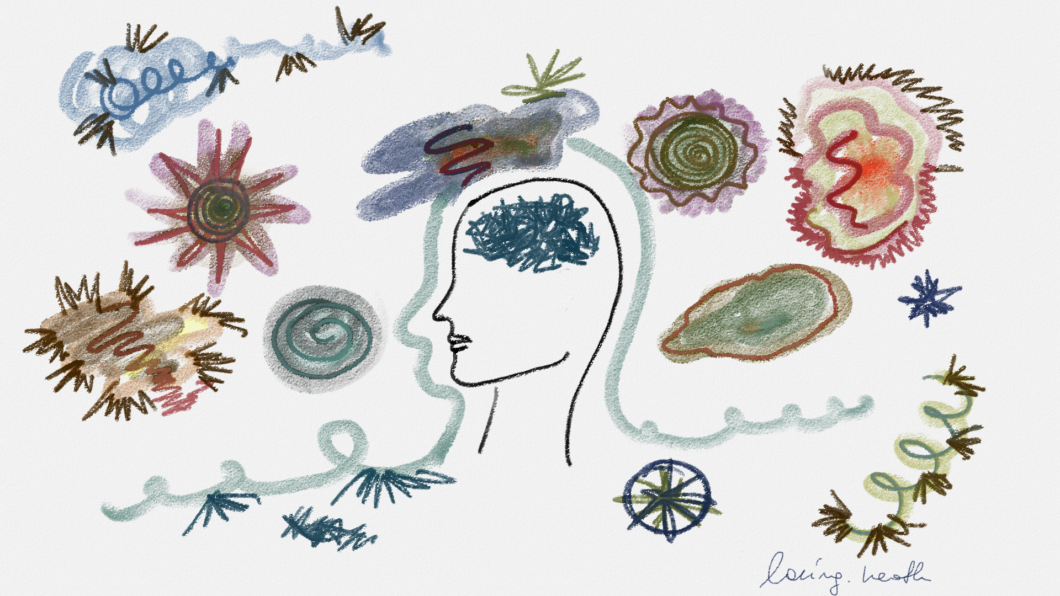The best way to cope with intrusive thoughts is to shine a little bit of light into that dark side of our minds.
Let’s start with 5 main types of intrusive thoughts we deal with. See which of the types and examples below resonates with you the most; if none of the types or examples resonate with you, that’s OK; we are all unique, and all of the solutions to cope with intrusive thoughts will work regardless of their specific type.
5 Main Types of Intrusive Thoughts
Intrusive thoughts can be categorized into several types, including:
-
- Harm-related thoughts: Thoughts about causing harm to oneself or others.
-
- Sexual thoughts: Inappropriate or taboo sexual thoughts.
-
- Religious or blasphemous thoughts: Thoughts that go against one’s religious beliefs.
-
- Doubt-related thoughts: Persistent doubts about actions, decisions, or moral integrity.
-
- Violent Intrusive Thoughts: Unwanted, distressing thoughts about causing harm.
Trigger warning – some of the harmful thoughts examples might cause distress.
Examples of Intrusive Thoughts
Harm-Related Intrusive Thoughts
-
- Imagining harming a loved one.
-
- Thoughts of pushing someone in front of a train.
-
- Fear of accidentally poisoning someone.
-
- Visualizing a car accident.
-
- Thoughts of hurting oneself with a sharp object.
-
- Fear of dropping a baby.
-
- Imagining causing a fire.
-
- Thoughts of strangling someone.
-
- Fear of causing a plane crash.
-
- Visualizing a violent robbery.
Sexual Intrusive Thoughts
-
- Inappropriate sexual thoughts about a family member.
-
- Imagining sexual acts with strangers.
-
- Fear of being sexually attracted to children.
-
- Thoughts of infidelity.
-
- Visualizing sexual acts in public.
-
- Fear of being sexually attracted to animals.
-
- Imagining sexual acts with colleagues.
-
- Thoughts of sexual violence.
-
- Fear of being sexually attracted to inappropriate objects.
-
- Visualizing sexual acts with authority figures.
Religious or Blasphemous Intrusive Thoughts
-
- Thoughts of cursing in a place of worship.
-
- Fear of committing blasphemy.
-
- Imagining desecrating religious symbols.
-
- Thoughts of doubting one’s faith.
-
- Fear of being possessed by a demon.
-
- Visualizing religious figures in inappropriate situations.
-
- Thoughts of renouncing one’s religion.
-
- Fear of being punished by a deity.
-
- Imagining sacrilegious acts.
-
- Thoughts of questioning religious teachings.
Doubt-Related Intrusive Thoughts
-
- Fear of leaving the stove on.
-
- Thoughts of not locking the door.
-
- Doubts about one’s sexual orientation.
-
- Fear of making a wrong decision.
-
- Thoughts of not completing a task correctly.
-
- Doubts about one’s relationship.
-
- Fear of forgetting something important.
-
- Thoughts of not being good enough.
-
- Doubts about one’s abilities.
-
- Fear of being a fraud.
Violent Intrusive Thoughts
-
- Imagining stabbing someone.
-
- Thoughts of shooting someone.
-
- Visualizing a physical fight.
-
- Fear of committing a violent crime.
-
- Thoughts of torturing someone.
-
- Imagining a mass shooting.
-
- Fear of being a serial killer.
-
- Visualizing a brutal attack.
-
- Thoughts of causing a war.
-
- Fear of being involved in a violent riot.
Intrusive thoughts thrive in shame.
Intrusive thoughts are not easy to talk about, but they are indeed a normal part of our lives. We all have them; the key is to learn to cope with them effectively. What I often see in my sessions is that even opening up about your intrusive thoughts might reduce their intensity.


